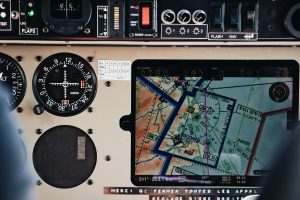 In the dynamic world of aviation, the cockpit has transformed from a realm of manual gauges and dials to a sophisticated command center, connected by the latest in Wi-Fi and Bluetooth technology. This evolution brings unparalleled efficiency and access to real-time data but also introduces a new frontier of cybersecurity challenges. As we delve into the intricacies of securing the connected cockpit, it's crucial to address the distinct needs and responsibilities of two primary groups within the aviation community: those flying certified aircraft and those piloting experimental aircraft.
In the dynamic world of aviation, the cockpit has transformed from a realm of manual gauges and dials to a sophisticated command center, connected by the latest in Wi-Fi and Bluetooth technology. This evolution brings unparalleled efficiency and access to real-time data but also introduces a new frontier of cybersecurity challenges. As we delve into the intricacies of securing the connected cockpit, it's crucial to address the distinct needs and responsibilities of two primary groups within the aviation community: those flying certified aircraft and those piloting experimental aircraft.
The Dual Pathways of Aviation Cybersecurity
Certified Aircraft: Pilots and owners of certified aircraft operate under stringent Federal Aviation Administration (FAA) protocols. The avionics in these aircraft undergo rigorous testing and certification processes, designed to ensure the highest standards of safety and reliability. This regulatory oversight includes cybersecurity measures, aimed at protecting the aircraft's critical systems from potential cyber threats.
Experimental Aircraft: In contrast, the experimental aviation sector enjoys greater flexibility in selecting and installing avionics. While this freedom allows for innovation and customization, it also necessitates a proactive approach to cybersecurity. The avionics used in experimental aircraft may not be subject to the same rigorous verification processes as their certified counterparts, potentially leaving them more vulnerable to cyberattacks.
The Importance of Choosing Secure Avionics
For both certified and experimental aircraft, the selection of avionics plays a pivotal role in cybersecurity. Opting for systems that have undergone thorough testing and development, adhering to stringent protocols, can significantly enhance the security of the connected cockpit. While these avionics may come with a higher price tag, the investment in security is invaluable, safeguarding the aircraft's critical systems against the ever-evolving landscape of cyber threats.
Steps to Enhance Cybersecurity in the Connected Cockpit
Regardless of the aircraft's certification status, there are universal steps that pilots and owners can take to fortify their cybersecurity defenses:
1. Upgrade to Secure Avionics: Consider investing in avionics that meet rigorous security standards, even for experimental aircraft. This investment can pay dividends in enhanced security and peace of mind.
2. Change Default Passwords: A fundamental yet often overlooked step, changing default passwords on avionics systems can thwart unauthorized access attempts.
3. Regular Firmware Updates: Keep avionics firmware updated to patch vulnerabilities and bolster your defenses against cyber threats.
4. Secure Wireless Connections: Implement strong encryption for Wi-Fi networks and Bluetooth connections to protect against unauthorized access.
5. Stay Informed and Vigilant: Maintain awareness of the latest cybersecurity trends and threats in aviation. Educate yourself and your team on best practices for digital defense.
Securing the connected cockpit is a shared responsibility, transcending the divide between certified and experimental aviation. By embracing a culture of cybersecurity vigilance and investing in secure avionics, the aviation community can navigate this digital frontier with confidence. The journey towards cybersecurity is ongoing, but with proactive measures and a commitment to excellence, pilots and aircraft owners can protect their airborne endeavors from cyber threats, ensuring that the skies remain a domain of safety and freedom.





